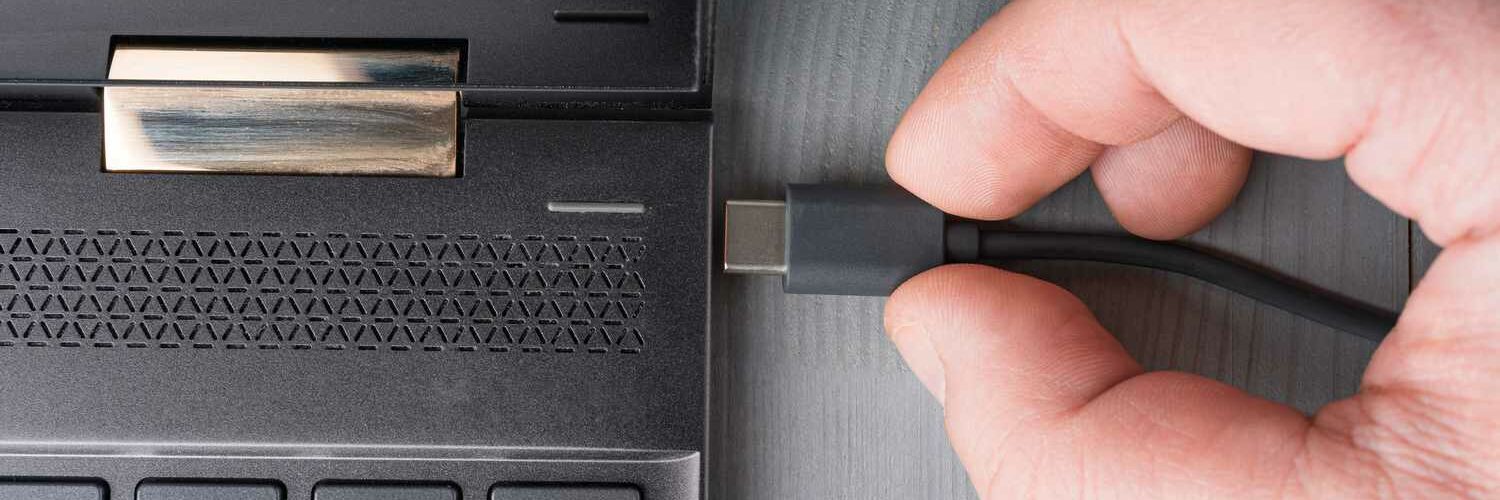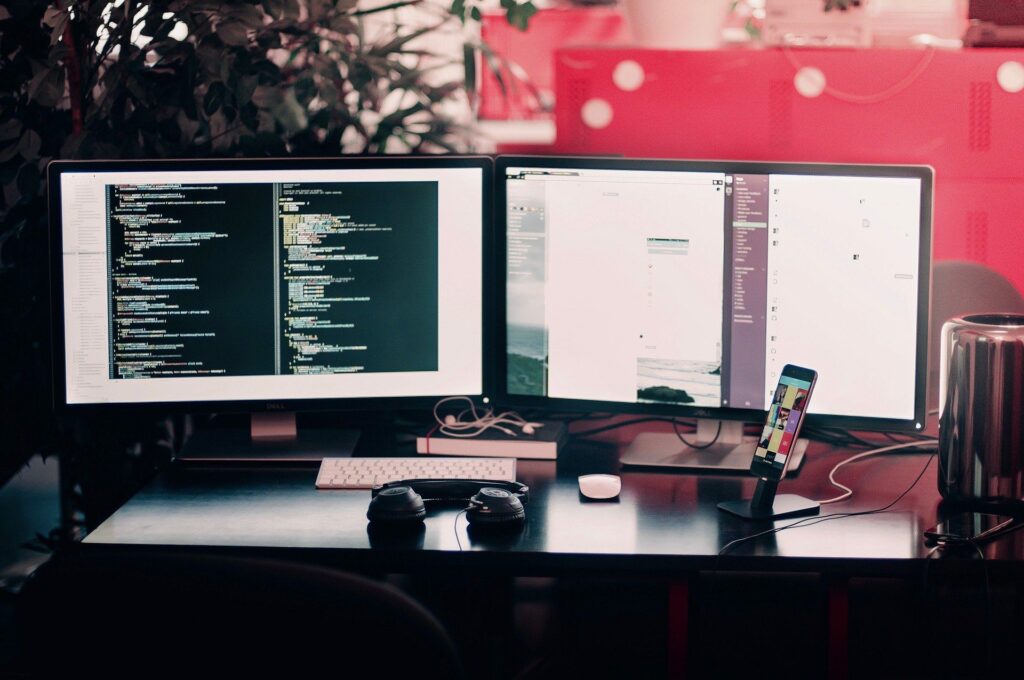Table of Contents
How to Connect Laptop to Two Monitors?
How To Connect Laptop To Two Monitors? Connecting multiple monitors to a laptop is an incredible asset for professionals and casual users alike, increasing productivity by providing extra screen real estate and helping users better organize their digital workspace.
Before connecting a second monitor to your laptop, ensure it has all of the required ports, compatible cables, and operating system features to support multiple displays.
Features Of Connect Laptop To Two Monitors
- Multiple monitors offer many advantages for using a laptop. First, using two monitors provides more screen real estate to view and work with multiple applications simultaneously – perfect for video editing, programming, and graphic design tasks. Furthermore, dual monitors can reduce window switching by keeping reference materials open on one monitor while working on projects on another one.
- Many modern laptops provide support for multiple monitors through built-in ports or adapters; however, to connect additional monitors they may require purchasing either an external display docking station or USB-C to HDMI or DisplayPort MST hub – once connected they can adjust settings through their operating system to take advantage of all that extra workspace!
- Some monitors and laptops support daisy-chaining, enabling multiple monitors or laptops to be linked together through one port for easier cable management and space savings. Users can take advantage of third-party software to further optimize their experience by creating shortcuts for switching displays or organizing windows on their screens.
- When connecting a laptop to two monitors, it is essential to take note of their individual resolution and refresh rates, as well as match input/output ports from each monitor with those from your laptop for optimal connection and resolution issues. Doing this will ensure a seamless experience and avoid latency or display resolution problems.
Video Output Ports
An appropriate port can make all the difference when working with multiple monitors. To ensure an easy and reliable setup process, ensure both your laptop and each of the monitors you wish to connect have compatible ports for seamless setup.
HDMI video output ports are common on laptops and monitors, providing high-quality video and audio transmission.
USB-C is a flexible port capable of supporting video output as well as other functions, so be sure to check your laptop specifications to see if this output mode can support video output via USB-C.
DisplayPort is an innovative interface, increasingly prevalent on laptops and monitors alike. Make sure both monitors you intend to connect contain compatible DisplayPort ports before connecting.
DVI connections may be less popular these days, but they still can be helpful when using an older monitor or budget laptop. A DVI cable can help maximize its potential and ensure you make the most of your device.
Connect one end of the cable to your laptop’s HDMI or DisplayPort port, and connect its other end to its counterpart on the monitor. Switch both computers on, as well as both monitors. Adjust resolution and orientation settings within your laptop display settings according to how you wish for them to be organized on your desk.
Monitors
Connecting monitors to a laptop presents many options; choosing the ideal method depends on both your laptop’s ports and capabilities as well as which ports exist on each monitor you own. When purchasing new monitors, ensure they feature compatible connections if your laptop supports them.
The three most frequently used connectors are HDMI, USB-C, and DisplayPort. Some newer monitors feature built-in USB-C ports for connecting directly with laptops; others use a DP-In connection compatible with TB-3 or TB-4 Thunderbolt cables (these resemble HDMI but one side has flat edges instead). Furthermore, certain models allow daisy chaining of multiple monitors using one DP-In and one DP-Out connection.
If not, type “Display settings” into the Start menu and follow its instructions; in Windows(tm), for example, click on the Arrangement tab and then either Duplicate Displays or Extend Displays before selecting either option in Duplicate/Expand Displays window. Depending on your setup, the Display settings window might also allow for changing monitor resolution or screen layout options.
Power
When connecting multiple external monitors to a laptop computer, sufficient power must be available from either its video output ports or an additional power source such as docking stations that offer extra USB type A or C connections for driving both displays
Examine both your laptop and monitor specifications for video output ports and input ports, and view its power adapter (the black brick). Inspect the amp draw from its power adapter; to ensure sufficient amperage is available to support both laptop and monitor usage, consider purchasing a USB powerboard such as Belkin 4 Outlet Powerboard with 2 USB Ports 2.4A to ensure adequate support of both.
Once you have all of the cables and adapters necessary, connect them securely to their ports on both your laptop and monitors. If using a DisplayPort connection, daisy chaining could also be possible between multiple monitors.
Dual monitor setups can significantly boost productivity and provide ample screen real estate for working, gaming, and multitasking. This guide walks you through everything necessary for setting up a dual-monitor laptop setup – from selecting cables and monitors to configuring display settings and troubleshooting common problems. For extra assistance download DriverSupport | ONE which automatically updates drivers to ensure compatibility, system stability, ad optimal performance.
Troubleshooting
As part of a productive work environment, multiple monitors can be invaluable tools. But sometimes there may be complications with your setup; understanding effective troubleshooting strategies can help resolve common problems like poor display quality or incorrect settings configuration.
If your monitors seem to be malfunctioning, the first thing to check is their connections and power status. If using an adapter to connect laptops to monitors, ensure each is set with an input connector that suits each monitor – some monitors offer on-screen menus for manually setting these.
It could be that something is amiss with either the cord itself or its connection with your monitor; also make sure it is plugged securely without twists or bends.
Another potential issue may arise if your laptop’s video output port does not match that of the monitor, requiring an adapter such as an HDMI to HDMI adapter, DisplayPort to HDMI adapter, or Thunderbolt adapter to bridge the gap.
Conclusion
Laptops have revolutionized our way of using technology for work, gaming, and creativity; but their small screens make reading or viewing larger files or images challenging. Connecting a second monitor to your laptop can help resolve this problem by giving you more space for reading, multitasking, and enjoying games or videos. In this article we will give the steps to follow to successfully connect two monitors; additionally, we’ll cover any common issues encountered while connecting multiple screens simultaneously as well as how to deal with them effectively.






Add comment